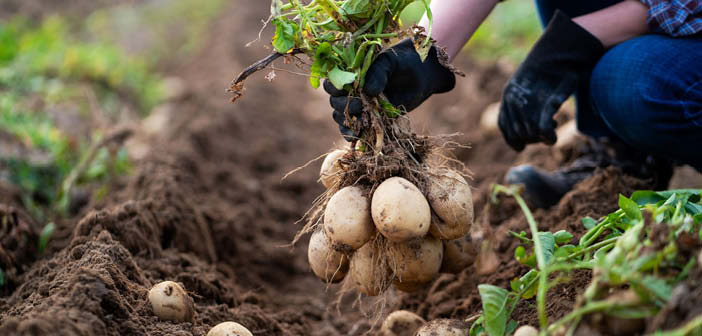Chinese scientists from the Agricultural Genomics Institute at Shenzhen have revealed that the potato came from a chance natural interbreeding event between the ancestors of today’s tomatoes and those of a closely related group called Etuberosum.
The breakthrough, which came from an international project including input from taxonomy and evolutionary biology experts at the Natural History Museum, has discovered that the ancient roots of one of the world’s most important crops started with an extraordinary chance natural interbreeding event between two wild plants nine million years ago.
The discovery uncovers a missing piece of the potato’s evolutionary history and solves the mystery of where the world’s third most important staple crop comes from. The answers gleaned from this study means that scientists can turn the potato into a seed crop, with much faster breeding efficiency and a better resistance to disease and climate change.
The team analysed 450 potato genomes (including many domestic varieties) and 56 wild relatives to solve the mystery of why modern potato plants look very similar to the wild species of the Etuberosum group (despite the latter not carrying the structure we eat – the tubers) but are evolutionarily-speaking more closely related to tomatoes in some parts of their genomes. The analysis confirmed that the potato carries a balanced genetic legacy from its two ancestors, with key genes inherited from each that together made tuber formation possible.
One gene – SP6A, a signal for tuberisation – came from the tomato side of the family. But it was only when paired with IT1 – a gene regulating underground stem growth from Etuberosum – that the potato was able to evolve the thick, starchy underground storage organ we know today.
This evolutionary leap occurred as the Andes mountains were rapidly rising in a period of major environmental change caused by the Atlantic plate pushing beneath the South American plate. Phylogenetic analysis of today’s members of the two ‘parent plant’ lineages show how they each occupy distinct environmental niches: tomatoes (dry and hot) and Etuberosum (temperate).
Lead author of the study, Zhiyang Zhang, of the Agricultural Genomics Institute at Shenzhen, commented, “Wild potatoes are very difficult to sample, so this dataset represents the most comprehensive collection of wild potato genomic data ever analysed.”
Dr Sandy Knapp, botany researcher at the Natural History Museum and co-author, added, “Science never stops – it keeps asking the next interesting question. The group behind this study came together to see how we can use insights from evolution to speed up and improve breeding of cultivated and domesticated potatoes globally.
“By combining genomic excellence with an understanding of the 107 species of wild potatoes and their distribution, which comes from specimens held in collections like those at the Museum, the team have been able to uncover the very functional underpinning of the heightened diversification of the potato plant lineage – which is quite extraordinary.”
Dr Tiina Särkinen, a nightshade expert at the Royal Botanic Garden Edinburgh and another co-author, said: “These results make us look at our humble potato in a very different light: potato and all its wild relatives came to exist thanks to a chance encounter of two very different individuals. That’s actually quite romantic. The origin of many of our species isn’t a simple story, and it’s very exciting that we can now discover these tangled, complex origins thanks to the wealth of genomic data.”
